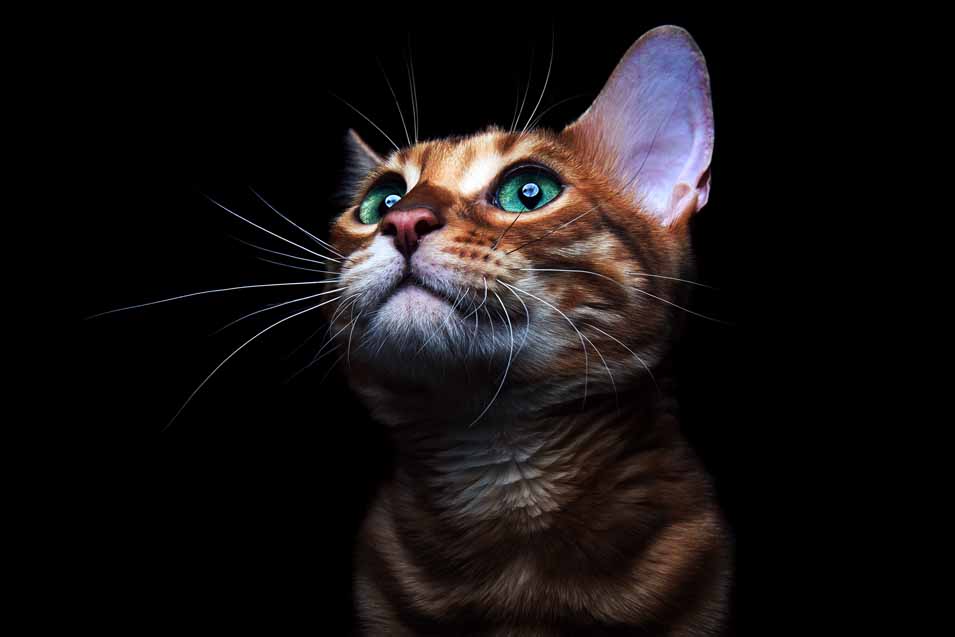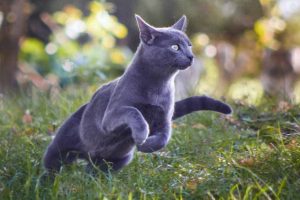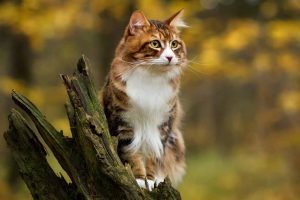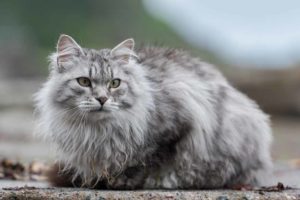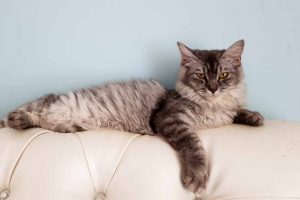Cats have long been regarded as valued, treasured members of our families. In ancient times, however, cats were revered as gods or goddesses and often worshipped. Depending upon the religion or belief system, cats were variously depicted as guides to humans, guardians of the human soul and body, or even monsters who sought to destroy humans. Here are just a few of the cats found in mythology.
Bast
Known as the cat goddess of ancient Egypt, Bast, also called Bastet, is the female, first-born child of the sun god Ra. Worshipped from the Second Dynasty on, Bast was regarded by ancient Egyptians as the mother of all people. She was considered to be the goddess of pregnancy and childbirth and the eye of the moon. Additionally, because her image was often on containers in which Egyptians stored perfumed ointments, Bast also was known as the goddess of perfume. The name “Bast” means “female devourer,” as this cat was presented as a fierce lioness who would protect Ra and the people of ancient Egypt.
Chimera
The Chimera is a hybrid feline creature in Greek mythology. She is depicted as a monster with the head and body of a lion, a goat’s head on her back, and the hindquarters of a dragon or serpent. In mythology, the Chimera was perceived as a danger to Lycia (today’s Turkey). Ultimately, Pegasus and Bellerophon slayed the mythical Chimera.
Today, the word chimera is used to denote a dream that is not attainable, and, in medicine, also indicates a tissue made of up a diverse composition of genetics. The mother of the Chimera was Echinda, half snake and half woman; while her father was the beast Typhon. She also had siblings, Sphinx and Nemean Lion, who are discussed below.
Sphinx
The Sphinx in Greek mythology is another sibling to the Chimera and Nemean Lion, its parents being Echinda and Typhon. The Sphinx is a flying monster, having the body of a lion, head and shoulders of a woman, and wings of a bird. It would terrorize pedestrians traveling to Thebes, presenting them with a riddle which they had to solve to pass. If they failed to solve the riddle, the Sphinx would eat the travelers. In mythology, Jocasta was the person who ultimately defeated the Sphinx when she correctly answered the riddle, confounding the Sphinx and causing the Sphinx to throw herself off a cliff and die. Today, a person who is mysterious or seen to be an enigma is sometimes referred to as a sphinx.
Nemean Lion (Leo)
The Nemean Lion, also known as Leo, was the third sibling to the Chimera and the Sphinx, and another offspring of Echinda and Typhon. Possessing a lion’s body and deep voice, the Nemean Lion was a flesh-eater who roamed the country killing and eating humans. Heracles was sent on a quest to slay the Nemean Lion and found it almost impossible to pierce his armor-like skin and to withstand his sharp claws. Heracles finally was able to strangle and skin the Nemean Lion, bringing his reign of terror to an end.
It is said that Zeus was so impressed with the Nemean Lion’s strength that he put him into the sky, forming the constellation Leo to remind everyone that he was the king of beasts. This began a tradition of using stone lions and the image of a lion to mark strength and power.
Shishi
Speaking of stone lions, in China, Shishi is the stone lion that stands guard by a physical structure, always in pairs. He became famous during the Chinese Han Dynasty. These guardian pairs of Shishi lions always included one male, known as the “yin,” who rested his right paw on a carved sphere while the female, the “yang,” rested her left paw on a cub to demonstrate the circle of life.
Narasimha
In the Hindu religion, the god Vishnu descended to earth in the form of a half lion-half man figure called Narasimha. Its task was to attack demons and evil forces at dusk and restore the earth’s order. Under the Hindu belief system, Vishnu will descend to earth during times of extreme wickedness or social disorder to restore earth’s righteousness and order. Narasimha was just one of the avatars Vishnu used to do so.
Simhavaktra Dakini
The guardian of Vajrayana Buddhism, Simhavaktra Dakini is a lion-faced female “sky walker” whose job is to guide humans on the right path, removing both spiritual and physical obstacles that may be in the way, like ego and pride. She has flaming hair, that symbolizes the fire of wisdom; human skin, symbolizing removing all illusion; and jewelry, symbolizing the Five Buddhas who guard the cosmos. The third eye in her forehead enables her to see past any negative forces.
Bakeneko
In Japanese culture, the Bakeneko is a type of supernatural creature. The Japanese regarded all cats as supernatural because of the way their fur stands up due to static electricity, the way their eyes can change shape during different times of the day, how they can walk stealthily and quietly, how their behavior is hard to control, their sharp claws and teeth, and their nocturnal behavior.
In Japanese mythology, the Bakeneko look like ordinary domestic cats, but can walk on their hind legs and may grow as large as a human. Being shape-shifters, they can disguise themselves. It is said that Bakeneko can eat beings who are larger than themselves (including their human masters, whom they often kill, eat, and take the place of). If they don’t take over their masters in this way, Bakeneko may curse their masters and bring hardship upon them. They have been said to “accidentally” start fires in the house and to reanimate a fresh corpse and use it as a puppet.
How do such scary creatures originate? The Japanese believe that a Bakeneko can be created if a cat lives longer than 13 years, grows to over eight pounds, or eats large amounts of lamp oil. One sign that a cat may be becoming a Bakeneko is a very long tail.

